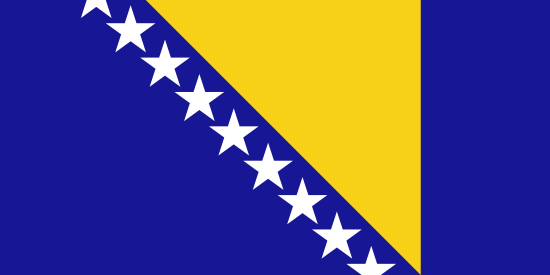Principais
destinos em Bósnia e Herzegovina
Descubra mais sobre os melhores lugares para visitar em Bósnia e Herzegovina
-
Capital: Sarajevo
-
Language(s): Bósnio, Croata, sérvio
-
Currency: Marco conversível (BAM)
-
Dial Code: + 387
Facts about Bósnia e Herzegovina
<p>Bosnia and Herzegovina, sometimes referred to as Bosnia-Herzegovina or simply Bosnia in the West, is a sovereign state in Southern Europe, on the Balkan Peninsula. Bordered by Croatia to the north, west and south, Serbia to the east, and Montenegro to the southeast, Bosnia and Herzegovina is almost landlocked, except for 26 kilometres (16 miles) of Adriatic Sea coastline, centered on the town of Neum. The interior of the country is mountainous centrally and to the south, hilly in the northwest, and flatland in the northeast. Inland is the larger geographic region with a moderate continental climate, marked by hot summers and cold, snowy winters. The southern tip of the country has a Mediterranean climate and plane topography. The country is home to three ethnic groups, or so-called "constituent peoples", a term unique for Bosnia-Herzegovina. Bosniaks are the largest group of the three, with Serbs second and Croats third. Regardless of ethnicity, a citizen of Bosnia and Herzegovina is often identified in English as a Bosnian. The terms Herzegovinian and Bosnian are maintained as a regional rather than ethnic distinction, and Herzegovina has no precisely defined borders of its own. Moreover, the country was called just "Bosnia" (without Herzegovina) until Austro-Hungarian occupation at the end of the nineteenth century. Formerly one of the six federal units constituting the Socialist Federal Republic of Yugoslavia, Bosnia and Herzegovina gained its independence during the Yugoslav Wars of the 1990s. Bosnia and Herzegovina is a parliamentary republic, which has a bicameral legislature and a three-member Presidency composed of a member of each major ethnic group. However, the central government's power is highly limited, as the country is largely decentralized and comprises two autonomous entities: the Federation of Bosnia and Herzegovina and Republika Srpska, with a third region, the Brčko District, governed under local government. The country is a potential candidate for membership to the European Union and has been a candidate for NATO membership since April 2010, when it received a Membership Action Plan at the summit in Tallinn. Additionally, the country has been a member of the Council of Europe since 24 April 2002 and a founding member of the Mediterranean Union upon its establishment on 13 July 2008.</p>
